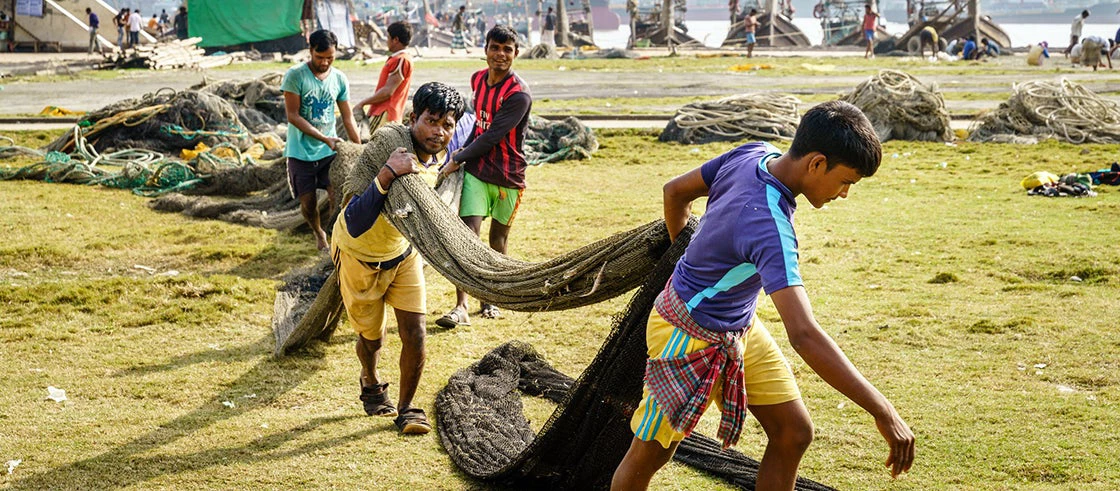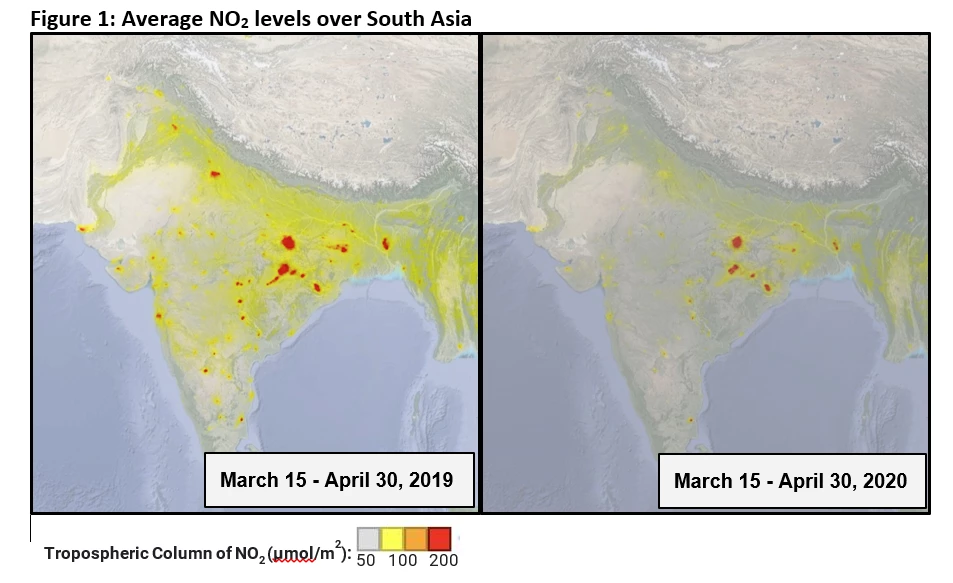 Fishermen working with the nets at a park in Chittagong, Bangladesh. Photo: Alexey Stiop / Shutterstock.com
Fishermen working with the nets at a park in Chittagong, Bangladesh. Photo: Alexey Stiop / Shutterstock.com
As they respond to the coronavirus (COVID-19), countries have a unique opportunity to plan for stronger and greener economies. They can use fiscal stimulus efforts not only to support economic recovery but also to improve environmental outcomes, pushing for a green fiscal stimulus. Last week’s World Environment Day reminds us that the time is now, and we are working to help make this a reality. In partnership with countries across South Asia, the World Bank is working to support livelihoods, create green jobs, and sow the seeds for countries to grow back stronger and greener.
The COVID-19 crisis and the environment are intricately connected. The coronavirus originated in the wild and was transmitted zoonotically to humans. Many poor and vulnerable communities rely on natural capital for their livelihoods – on marine fish stock, on forests for timber and other products – and the pandemic has disrupted supply chains and reduced demand. The collapse of nature-based tourism has affected numerous small businesses and communities. At the same time, cessation of economic activity has improved air quality and reduced greenhouse gas emissions.
Governments now must protect lives and livelihoods – strengthen health care services, provide vulnerable households safety nets, ensure small enterprises can stay afloat. But as countries gain control over the pandemic and begin reopening their economies, what will these economies look like? Will countries return to a world where the air is toxic and water polluted? A world where the risk of the next pandemic is only compounded by climate change?
Governments now must protect lives and livelihoods – strengthen health care services, provide vulnerable households safety nets, ensure small enterprises can stay afloat.
On June 8, World Oceans Day, the World Bank launched a regional initiative in partnership with Parley for the Oceans and the South Asia Cooperative Environment Programme (SACEP) to help South Asia curb its mounting marine plastic pollution. South Asia is the third-largest contributor to global plastic waste, and unless action is taken, the region’s waste is estimated to double by 2050. The Plastic Free Rivers and Seas for South Asia project will help coordinate actions and facilitate the transition to a circular plastic economy by supporting eco-innovation, while encouraging investments and greater collaboration between the public sector, private sector, and civil society across countries.
In Bangladesh, the World Bank-supported Sustainable Coastal and Marine Fisheries program has initiated emergency assistance to protect nearly 60,000 coastal aquaculture farmers impacted by COVID-19. It is also financing transportation support to take up to 50,000 tons of fish and fish products to local markets to improve food security. To help farmers purchase feed and seed, the program proposes using mobile cash transfers.
On World Oceans Day, the World Bank launched a regional initiative to help South Asia curb its mounting marine plastic pollution.

In Pakistan and Nepal, two new engagements will soon help create green jobs and lay the foundation for a greener recovery. The restructured Pakistan Hydromet and Climate Services project will support the government’s Green Wagers Initiative, a green jobs and fiscal stimulus program, to create 200,000 jobs in tree plantations and ecosystem restoration. The Nepal Forest for Prosperity project will soon assist community forest users groups, half a million people in targeted forest areas, to enhance livelihoods from the sustainable harvest of timber and other products. Building green infrastructure on degraded public lands in the country’s fragile Chure region will further create green jobs and enhance climate resilience.
Nepal’s tourism sector has collapsed due to COVID-19. Our Sustainable Tourism Enhancement of Nepal’s Protected Areas will contribute to its recovery by improving destination management, enhancing access infrastructure, upgrading tourism products and services, and increasing opportunities for local communities and enterprises, including those owned or managed by women.
Countries need to embrace green fiscal stimulus programs and show that economic resilience and better environmental outcomes can go hand in hand.
We are also looking for innovative ways to use our engagements, including through our Environmental and Social Framework, to de-risk economic recovery. The Maldives Clean Environment project is providing incremental funds to procure health clinic autoclaves for the pre-treatment of biomedical waste, preventing further spread of the virus. We are working to help countries strengthen occupational health and safety (OHS) systems across South Asia to protect workers and help prevent the spread of the virus as economies open and activity resumes in often cramped workplaces such as construction camps. OHS guidelines are being developed as part of our environmental impact assessment.
In Afghanistan, we are going even further. The Afghanistan COVID-19 Response Development Policy Grant includes policy actions to strengthen the country framework for worker safety and improve the implementation of regulations with a special focus on health workers at the forefront of the pandemic response.
In India, we are using data analytics as part of our technical assistance program on air quality management to better understand the impact of the lockdown on air quality and build a blueprint for a green fiscal stimulus program. Using data from Sentinel 5-P satellite (see Figure 1), we have found that average nitrogen dioxide (NO2) levels from March 15 to April 30, 2020, were lower than during the same period in 2019 across the country. Traffic has largely come to a standstill across the country, contributing to these results.
But what has been the effect of the lockdown on the most dangerous form of air pollution – PM2.5 particulates, which have an aerodynamic diameter of less than 2.5 microns – about one-thirtieth the width of a human hair? The effects are more complex because PM2.5 has a broader travel range and comes from both natural and anthropogenic sources across many sectors. Findings show that the drops in PM2.5 levels have not been as decisive. To address these questions, we are using data analytics to inform government programs to control air pollution, which will rise again as economic activity picks up.
The road ahead is long, but as World Environment Day and World Oceans Day remind us, it is time to dream bigger, and to set more ambitious targets for economic recovery and green outcomes. Countries need to embrace green fiscal stimulus programs and show that economic resilience and better environmental outcomes can go hand in hand.



Join the Conversation